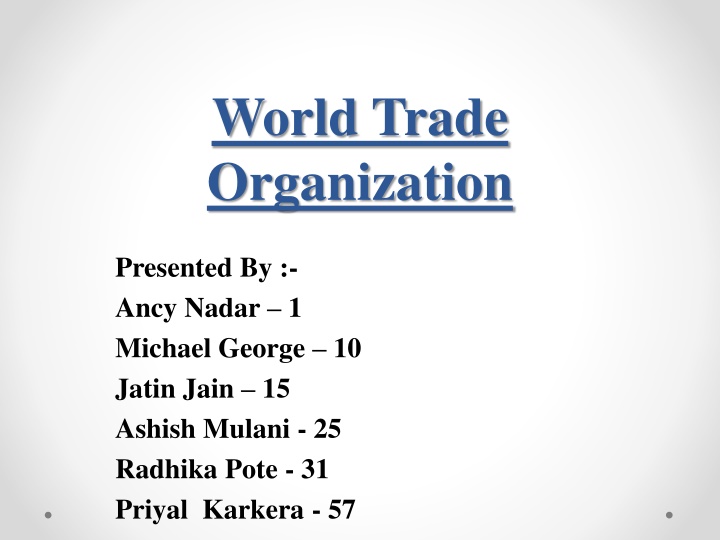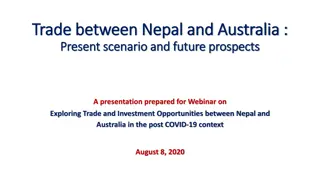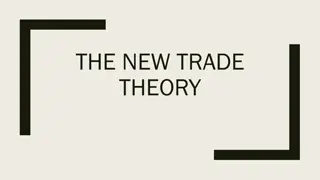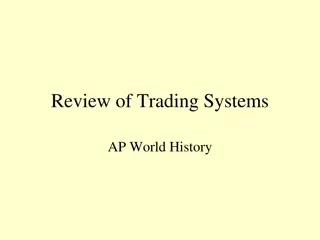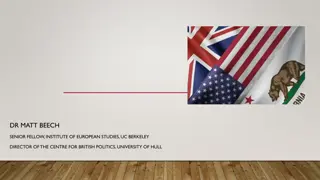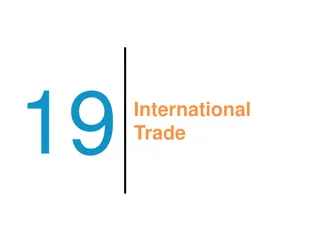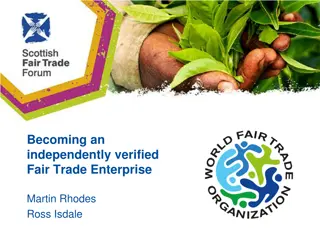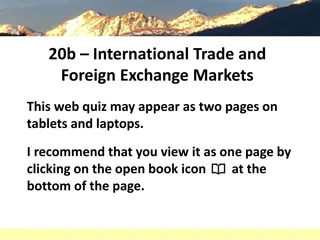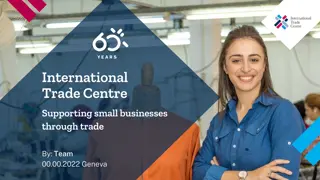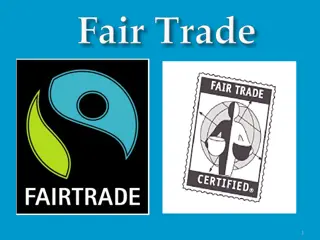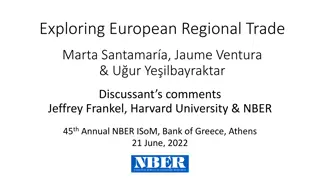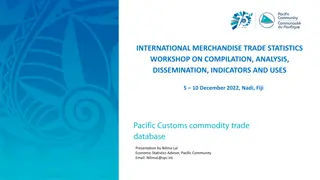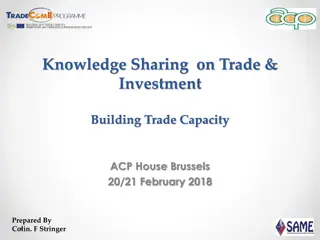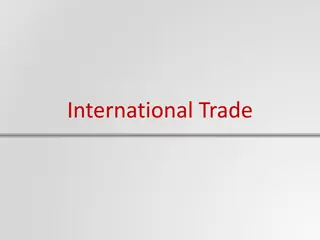Introduction to World Trade Organization: Rules, Membership, and Objectives
The World Trade Organization (WTO) is the international body governing global trade among nations. Established in 1995, it ensures smooth trade flow and resolves disputes. With 147 member countries, WTO promotes free trade, development of less developed nations, and environmental protection. Its objectives include optimal resource utilization, raising living standards, and trade dispute settlement procedures.
Download Presentation

Please find below an Image/Link to download the presentation.
The content on the website is provided AS IS for your information and personal use only. It may not be sold, licensed, or shared on other websites without obtaining consent from the author.If you encounter any issues during the download, it is possible that the publisher has removed the file from their server.
You are allowed to download the files provided on this website for personal or commercial use, subject to the condition that they are used lawfully. All files are the property of their respective owners.
The content on the website is provided AS IS for your information and personal use only. It may not be sold, licensed, or shared on other websites without obtaining consent from the author.
E N D
Presentation Transcript
World Trade Organization Presented By :- Ancy Nadar 1 Michael George 10 Jatin Jain 15 Ashish Mulani - 25 Radhika Pote - 31 Priyal Karkera - 57
INTRODUCTION The World Trade Organization (WTO) is the only international organization dealing with the global rules of trade between nations. The WTO ensures that trade flows as smoothly, predictably and freely as possible. So almost all the country in the world are a member of WTO. There are different types of countries like rich or poor countries, very industrialized, developing countries, etc.
FORMATION OF WTO The conversion of GATT in WTO in 1995 is a important event in the field of global trade. The World Trade Organization started functioning from 1st January,1995. The formation of WTO is the result of the Uruguay round of negotiations. WTO is based in Geneva, Switzerland.
WTO has larger membership than GATT. GATT ceased to exist as a separate institution and has become a part of the WTO. WTO has the membership of 147 countries. In present, WTO acts as the governing body of world trade.
OBJECTIVES OF WTO Free trade i.e. trade without discrimination. Growth of less developed countries (LDC). Protection and preservation of environment.
Ensure optimal utilization of available world s resources, expanding production and trading. Raising living standard of citizen of member nations and ensure full employment. Settlement of trades disputes among member countries through consultation and dispute settlement procedures.
FUNCTIONS OF WTO To revolve trade disputes that cannot be solved through bilateral talks. To implement tariff cuts and reduction of non-tariff barriers by members countries. To cooperate with other international institutions involved in global economic policy-making.
To promote international trade without discrimination of any type. To administer and implement the trade agreements signed under Uruguay Round Negotiations. To act as a forum for multilateral trade negotiations
ACHIEVEMENTS OF WTO Greater market orientation has become the general rule. Use of restrictive measures for BOP problems has declined markedly. Tariff-based protection has become the norm rather than the expectation.
Services trade has been brought into the multilateral system and many countries. Many UDCs have undertaken radical trade, exchange and domestic reforms. It has been agreed to reduce import tariffs on industrial goods, based on Swiss Formula.
WTO NEGOTIATIONS WTO provides a framework of negotiation between participating countries. Most issues dealt are from previous negotiations, especially from the Uruguay Round (1986 1994). The Doha Development Round or is the latest trade- negotiation round of the World Trade Organization.
Its objective was to lower trade barriers around the world, and thus increase global trade. Before the Doha ministerial, negotiations had already been under way on trade in agriculture and trade in services. Most countries participating in the negotiations believe that there is some economic advantage however not all agree to this.
CONCLUSION IT IS THE PLACE WHERE THE MEMBER COUNTRIES COME TOGETHER TO SOLVE THEIR PROBLEMS RELATED TO INTERNATIONAL TRADE. THIS SYSTEM HELPS PROMOTE PEACE BY HANDLEING DESPUTES OF MEMBER COUNTRIES. IT PROVIDES FREE TRADE WHICH CUTS THE COST OF LIVING AND PROVIDES MORE CHOICE OF PRODUCTS AND QULAITIES AND STIMULATES ECONOMIC GROWTH.
